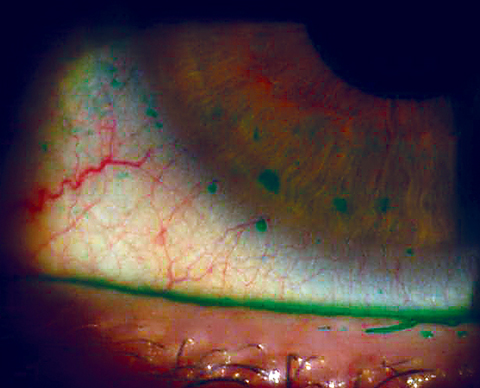 |
| Study participants who lived in locations with relative humidity less than 70% have a higher prevalence of DED. Click image to enlarge. |
The natural and artificial climates we expose our eyes to contribute in many ways to the status of the ocular surface. Low relative humidity is considered a triggering factor for dry eye, as research has shown it increases the evaporation rate at surfaces. In a new study, researchers investigated the impact of relative humidity and climate variables of place of residence on symptoms of dry eye disease (DED) and found that individuals who live in locations with relative humidity less than 70% have a higher prevalence of disease.
In a cross-sectional analysis conducted in Spain, the Ocular Surface Disease Index (OSDI) questionnaire was use to categorize 1,033 patients into DED and non-DED groups; Those who scored 22 or higher on the OSDI fell into the first category; those scoring below were considered to not have dry eye.
The prevalence of DED symptoms was 15.5% in this analysis. Participants who lived in places with <70% relative humidity showed a higher prevalence of DED than those who lived in places with ≥70% relative humidity. There was also a higher, but not statistically significant, risk for DED among females than previously described.
There were some differences in daily climate variables, such as wind gusts, atmospheric pressure and daily relative humidity, which confirmed the impact of climatic variations on dry eye.
“A similar risk—but not statistically significant—for DED among participants who lived in locations with low relative humidity (<70%) to well-known main risk factors for DED, such as age older than 50 years and female sex, was observed,” the authors noted.
The impact of long-term exposure to low relative humidity could be an additional precursor of DED that provokes a higher prevalence, the authors suggest. “Therefore, the generalizability of these study findings is enhanced by enrolling a large number of participants classified according to the relative humidity of their place of residence without significant differences in age and sex distribution,” they explained. “In fact, the results of this study could be of paramount relevance, suggesting that maintaining appropriate humidity and temperature in the ambient air, for example, at patients’ homes or workplaces, could be recommended for eye health, especially in patients who live in locations with low relative humidity.”
“Additionally, these results will help practitioners to improve DED management in a comprehensive way, taking into account the impact of climate on patients’ symptomatology to manage early dry eye symptoms and avoid disease progression, including recommendations to use humidifiers in the treatment plan to reduce exposure to the adverse environment,” they concluded.
Martin R. Symptoms of dry eye related to the relative humidity of living places. Cont Lens Ant Eye. May 11, 2023. [Epub ahead of print]. |


